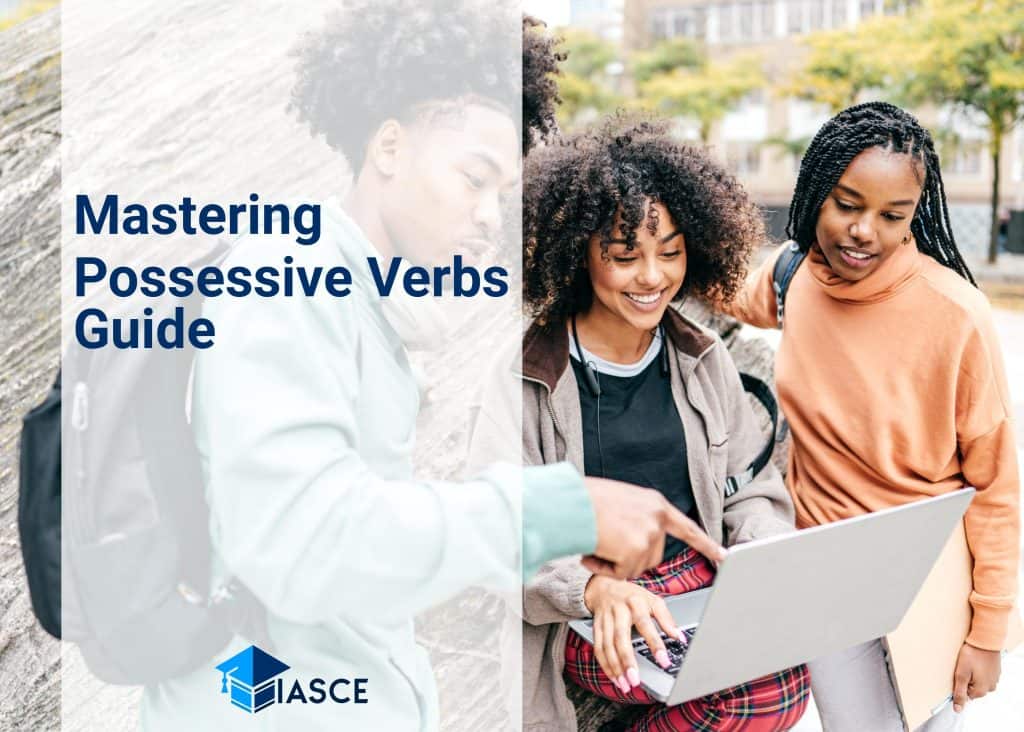Navigating the maze-like world of English grammar often feels like a Herculean task. Possessive verbs are one such complex territory that leaves many puzzled. I’m here to unravel these intricacies for you, making grammar less intimidating and more approachable.
Understanding possessive verbs is your key to mastering the art of indicating ownership in English. This might seem daunting at first, but trust me, it’s simpler than you think! By unlocking this secret, expression becomes effortless and communication clearer.
So let’s dive into the nitty-gritty of possessive verbs together. With patience and practice, we’ll conquer this grammatical mountain with ease! Decoding English grammar isn’t just about following rules – it’s an exciting journey into language itself. Ready for the adventure?
Grasping the Basics of Possessive Verbs
Let’s dive into the fascinating world of possessive verbs. It’s a topic that can often seem complicated, but once you understand it, you’ll see it’s simpler than it appears. And having this knowledge in your arsenal will make your writing more precise and effective.
Possessive verbs are basically an indicator of ownership or possession. In English, we usually indicate possession by adding an ‘s’ or ‘s’ to the end of nouns. For example, “John’s book” shows that John is the owner of the book.
But what happens when we’re dealing with verbs? Here’s where it gets interesting. There aren’t actually any possessive verbs in English!
It might sound like I’m pulling your leg here, but let me explain further.
Often people confuse possessive adjectives (my, your, his, her, its, our) and possessive pronouns (mine, yours) with being possessive forms of verbs – but they’re not! They are simply part of the noun phrase which indicates who owns something.
To illustrate this point clearly I’ve put together a simple table:
| Incorrect | Correct |
|---|---|
| My running | I’m running |
| Her gone | She has gone |
In both examples on the left column – ‘my’ and ‘her’ cannot be used as possessives before a verb; instead use personal pronouns like ‘I’ or ‘she’ followed by correct verb form as shown in right column.
So remember this golden rule: there aren’t any possessive forms for actions/verbs in English language!
This might feel counterintuitive at first glance because we’re often taught about possession early on when learning grammar rules. But once you’ve got this down pat, you’ll find yourself stepping up to another level on your journey to mastering English grammar.
Navigating Tricky Issues with Possessive Verbs
Tackling possessive verbs can be a bit like navigating through a maze. It’s not always easy, but it’s definitely rewarding once you’ve mastered them. So let’s delve into some common issues and how we can overcome them.
One of the first hurdles is understanding the difference between ‘s and s’. The former is used to show possession for singular nouns such as “the dog’s bone”, while the latter indicates possession for plural nouns, like “the dogs’ bones”. But remember, if a plural noun doesn’t end in s (like “children”), use ‘s (“children’s toys”).
| Singular Noun | Plural Noun |
|---|---|
| The dog**’s** bone | The dogs**’** bones |
| The child**’s** toy | The children**’s** toys |
Another common issue arises when dealing with joint ownership versus individual ownership. For joint ownership, only the final noun takes the possessive form (“John and Mary’s house”). However, for separate possessions, each noun should have its own possessive form (“John’s and Mary’s houses”).
Here are few more quick tips for mastering possessive verbs:
- Don’t confuse it’s (it is) with its (possessive form of it).
- Use apostrophes correctly in contractions: you’re = you are; they’re = they are.
- Always place your apostrophe outside of quotation marks.
Remember that English isn’t just about rules—it’s about expression! So don’t worry if you stumble every now and then. With practice, I’m confident you’ll become proficient at handling these tricky possessives in no time.
Wrapping up: Simplifying the Mystery of Possessive Verbs
Let’s revisit what we’ve learned so far. Possessive verbs, despite their name, aren’t actually a distinct category of verbs in English grammar. Instead, they’re often verb phrases used to express ownership or possession.
Take for instance the classic example “The cat’s toy”. ‘Cat’s’ is not a verb, but a possessive noun. When we want to transform it into a verb phrase expressing possession, we might say “The cat has a toy”. Here ‘has’ operates as our possessive verb.
In order to help us remember the difference between possessive nouns and verbs denoting possession, here’s an easy-to-follow table:
| Possessive Noun | Verb Phrase Denoting Possession |
|---|---|
| The dog’s bone | The dog has a bone |
| Susan’s book | Susan owns a book |
Notably though, not all verbs that denote ownership are considered possessive verbs – only those that can be directly replaced by “’s” or “s’ ” in the sentence. So while I might say “I hold my keys”, this does not mean ‘hold’ is functioning as a possessive verb because it cannot be replaced with “‘s” or “s'” (as in “my key’s”).
I hope you’ll take away from this blog how seemingly complex grammar concepts can become much simpler once broken down and examined closely. It may seem daunting at first glance but trust me; with practice and repetition, mastering these rules becomes second nature.
And always keep in mind: language evolves over time! Some rules may change slightly or even disappear altogether. That’s why it’s essential to keep learning and stay updated on modern usage trends.
Remember – there are no shortcuts when it comes to perfecting your grammar skills – but understanding core principles like these makes your journey easier.

